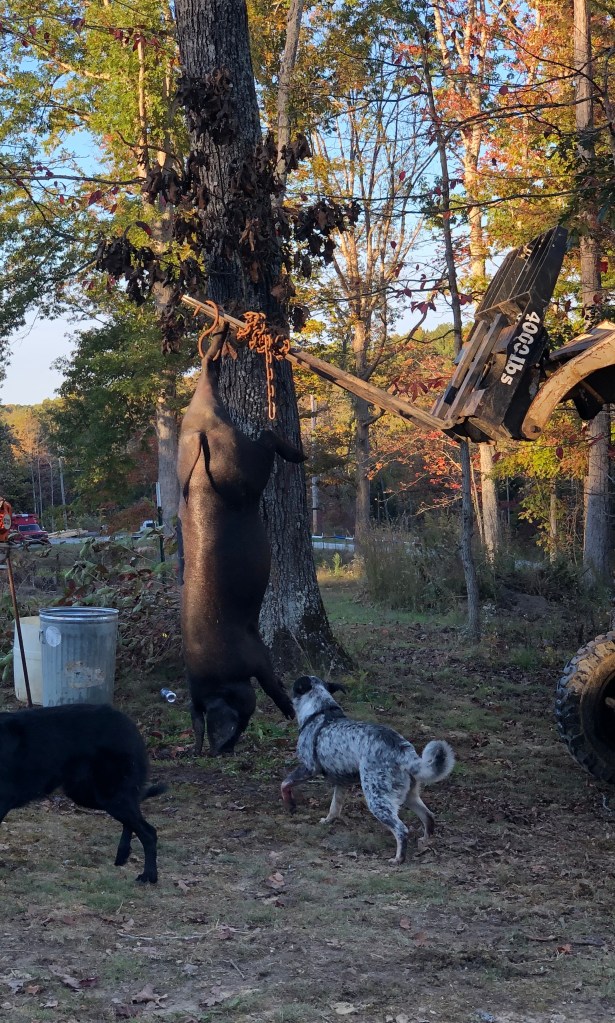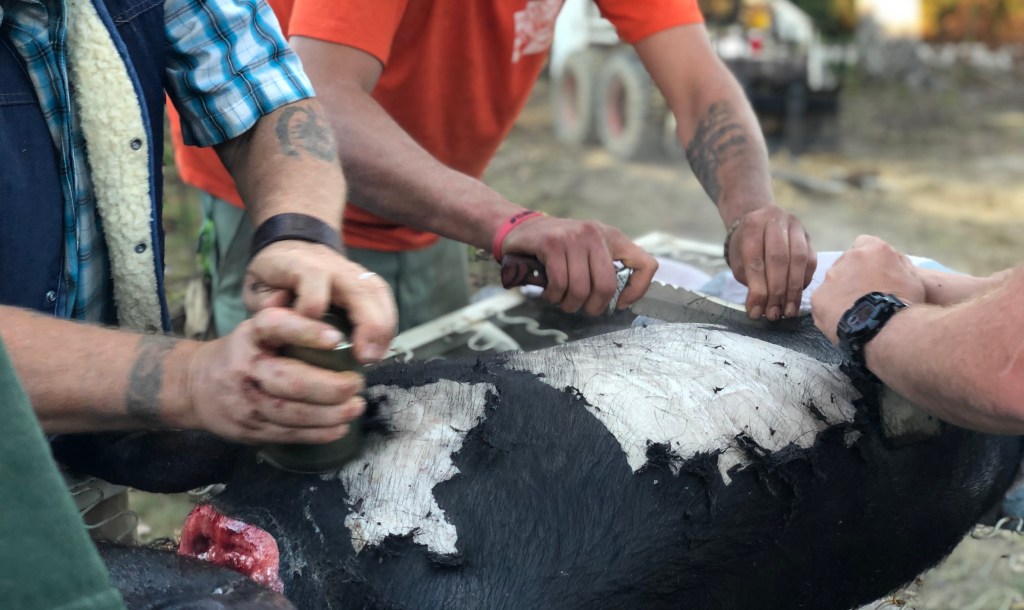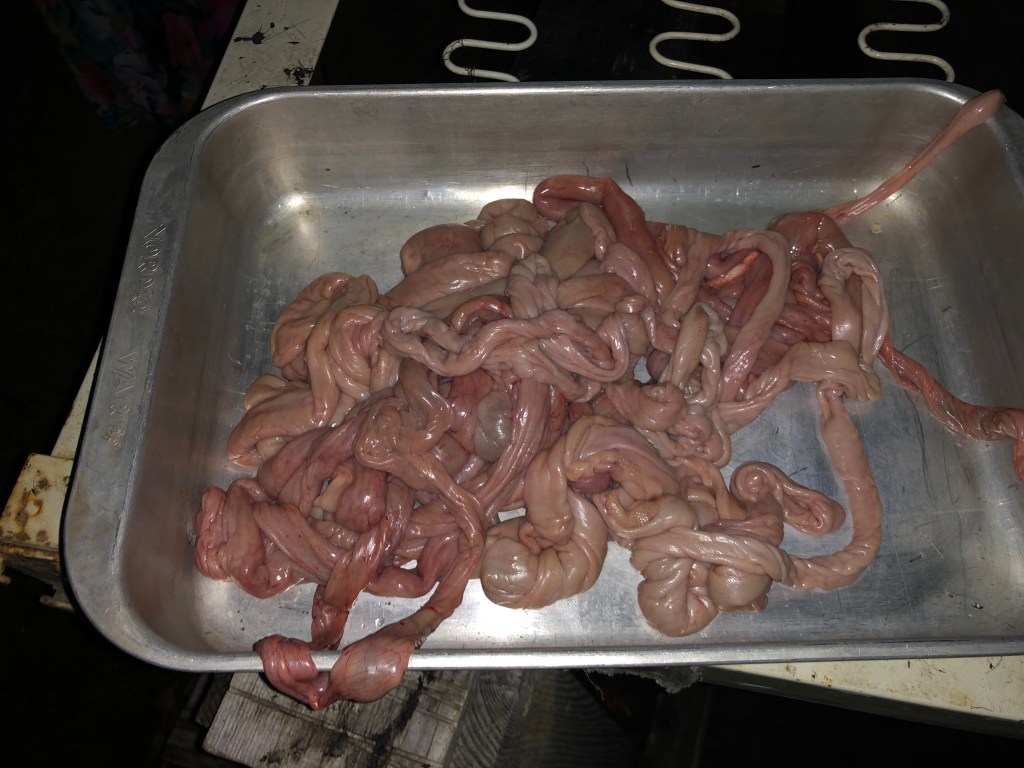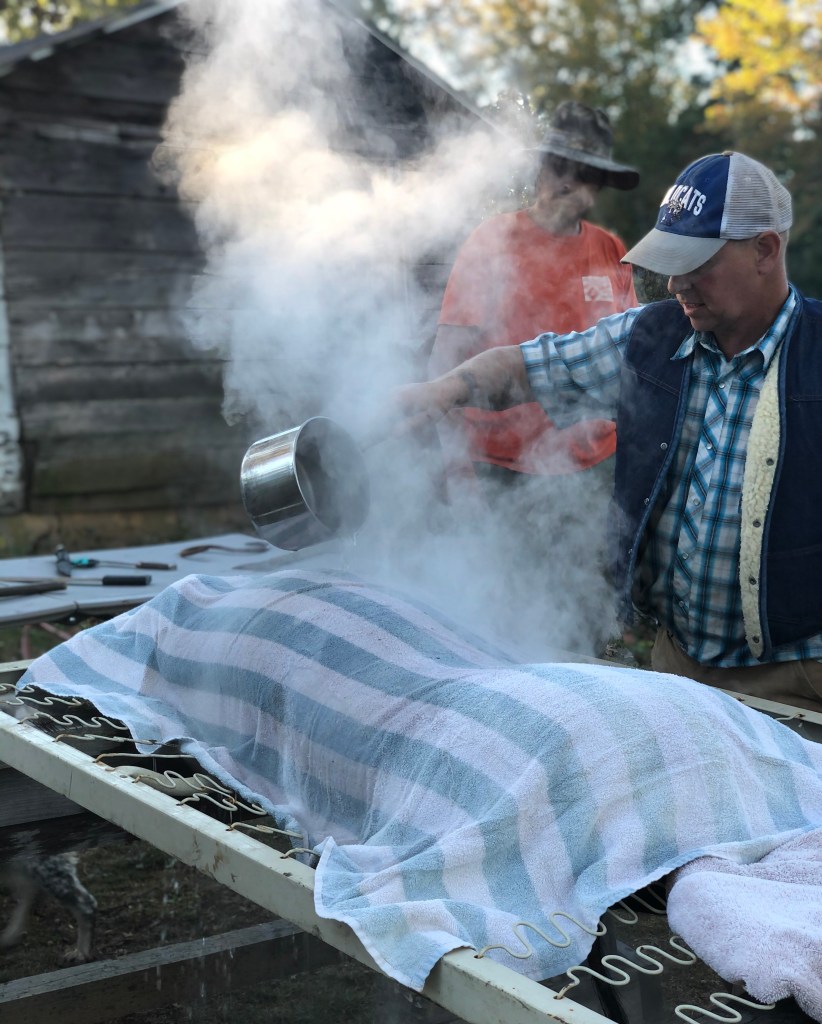
There are philosophies to hog killing, and ours is of course the best. Our philosophy is guided by two main principles. One, the animal should be as calm and happy as possible, and two, no one but the hog gets dead. The first principle is important because not only is it indicative of your quality as a person, but it is also one of the big factors controlling the quality of your meat. Stressed animals make for tougher, worse flavored meat. Think of the difference between a deer that’s dropped on the first shot, and a deer that had to be followed for miles before it died. You can taste the difference.
To keep the hog, Bacon in this case, as unstressed as possible we only separated him from the other hogs at the last moment, and we tried as much as was possible to not chase him. There was in the end a small amount of chasing and corralling, but not much. Bacon was killed with a 38 to the head and then we immediately cut his throat to let all the blood out. This is where we transition to the second principle. No one but the hog gets dead. Pigs are big and dangerous, especially after you shoot them. A pig sticker is a knife with a really long handle, this lets you cut their throat from a slightly greater distance.

Once the pig has bled out and is decidedly dead it needs to be scalded. If you don’t want to save the skin and fat you can just skin it out, but we like to use everything. There are two ways to scald a hog. One way you lift it up with the bobcat and dip it into a barrel of boiling water. The other way you cover it with a towel and pour boiling water over it. Since we just had one to do that is the method we chose this time.

It’s important to work fast because the guts are still in the pig at this time. Scraping can be accomplished with a variety of tools, we mostly ended up just using our side knives. The goal is to scrape just the colored skin and the hair off. If it’s not coming pour more water over it.

Next we hang the pig back up and gut it. There are a few pieces of organ meat you want to save. The liver, kidneys, heart, and spleen. I also saved the small intestines this time to try making sausage casing. Set the bits you’re saving aside (being very careful of the green wobbly bit on the liver) and feed the rest to the chickens.

From here we cut off the head and split the body in half, this will help it cool out faster and drain better. We also cut off the feet and tail. You can eat the feet of course, but it’s a lot of scraping, not a lot of meat, and the feet looked pretty nasty. So we didn’t.

Unwashed small intestines. 
Liver, Kidneys, Spleen and Heart

Would have loved to watch this again. Good memories.
LikeLike